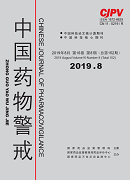|
|
Detection and Evaluation of Post-marketing Safety Alert Signals for Human Papillomavirus 9-valent Vaccine Based on US Vaccine Adverse Event Reporting System (VAERS)
GONG Li, PAN Lingyun, LIU Yan, JI Huanhuan, TANG Xuewen, JIA Yuntao
2019, 16(8):
478-486.
Objective To detect and evaluate the post-marketing safety warning signals of separate vaccination of human papillomavirus 9-valent vaccine (9vHPV), so as to provide references for follow-up studies and vaccinations. Methods 9vHPV-related (alone) AE reports from January 2015 to December 2018 were collected from the VAERS and comprehensive standard method was adopted to detect and evaluate the safety warning signals. Results A total of 39 safety warning signals were obtained through detection, involving 14 SOCs in total, the first three signals in each class were nervous system diseases, reproductive system diseases and breast diseases, and investigations, among which, the new signals of clinical concern included irregular menstruation (PRR=12.11,χ2=48.94), amenorrhea (PRR=4.43,χ2=14.41), infertility (PRR=8.86,χ2=32.54), ovarian cyst (PRR=7.85,χ2=16.31), opsomenorrhea (PRR=8.56,χ2=17.81), menorrhagia (PRR=4.96, χ2=9.42), premature menopause (PRR=4.43,χ2=5.93), alopecia (PRR=3.02,χ2=19.27). Conclusion In this paper, comprehensive standard method was adopted to mine relevant data from VAERS and many new safety signals were detected at last, which lays a foundation for the follow-up safety studies on 9vHPV.
References |
Related Articles |
Metrics
|
